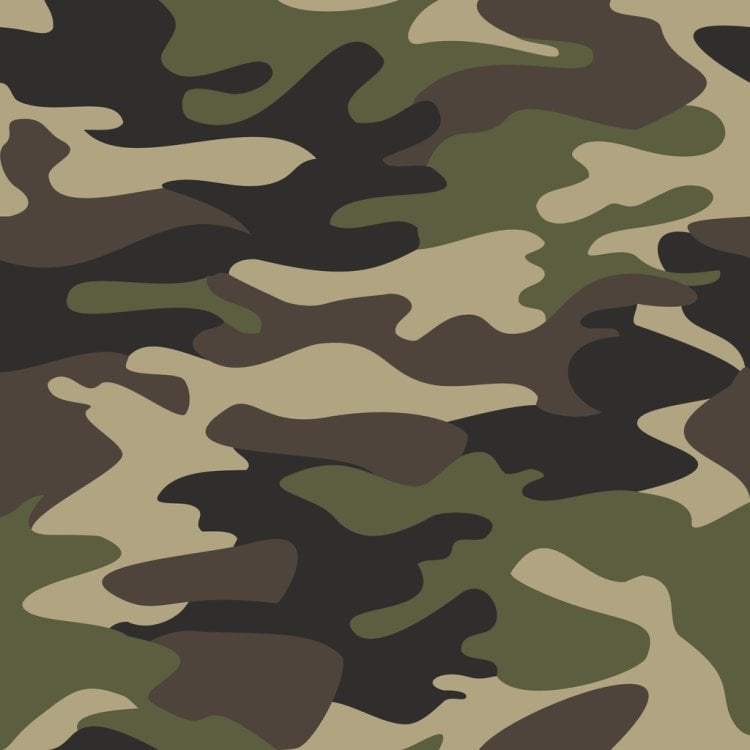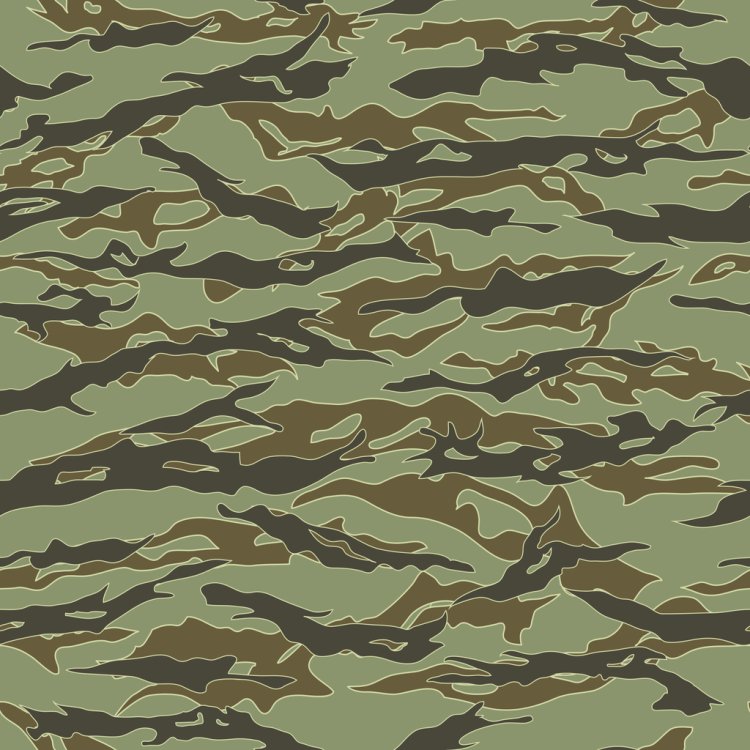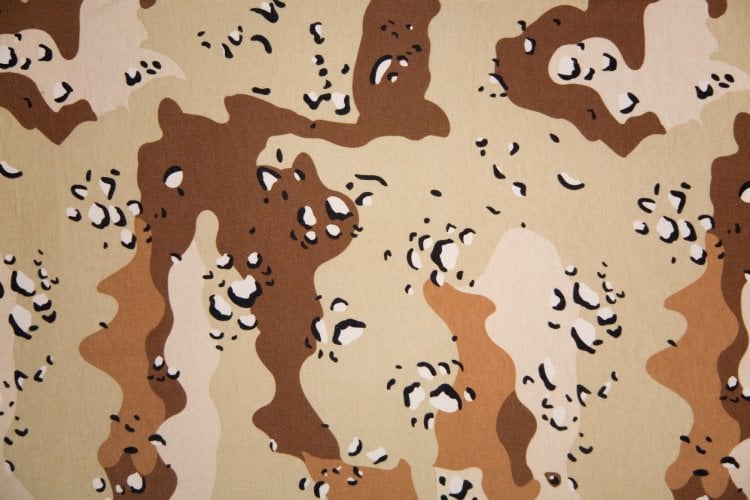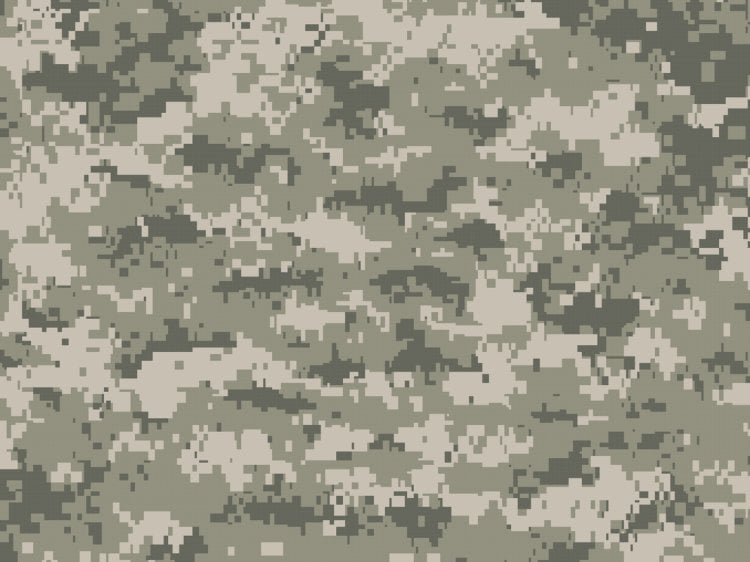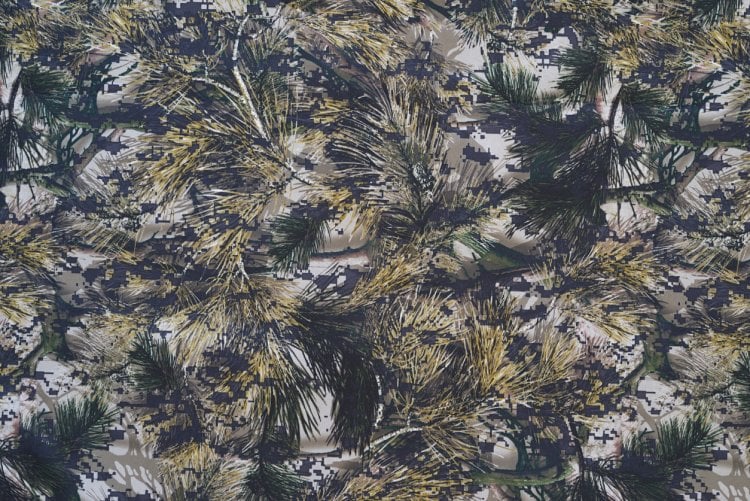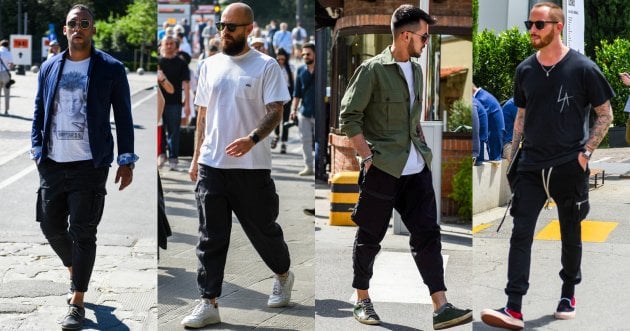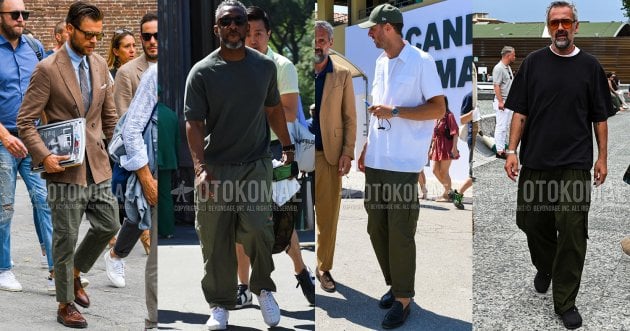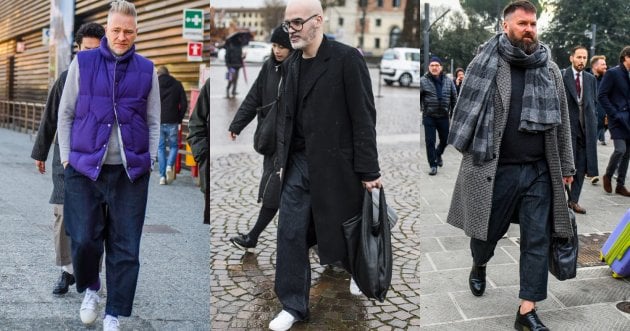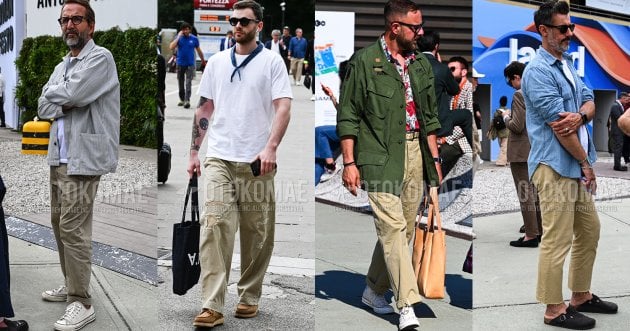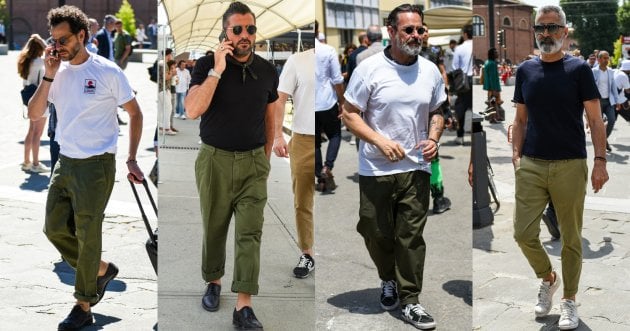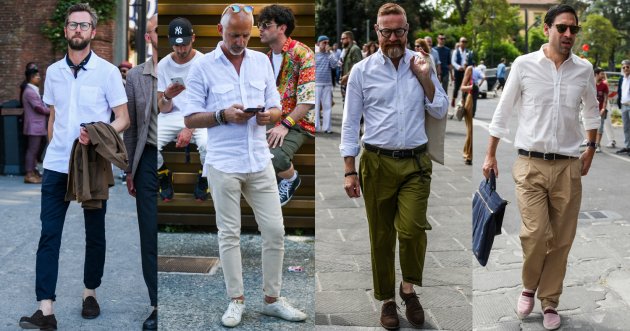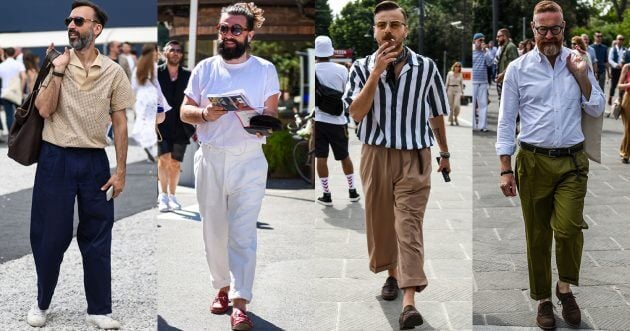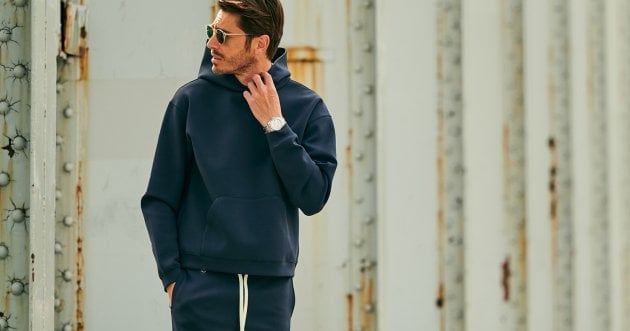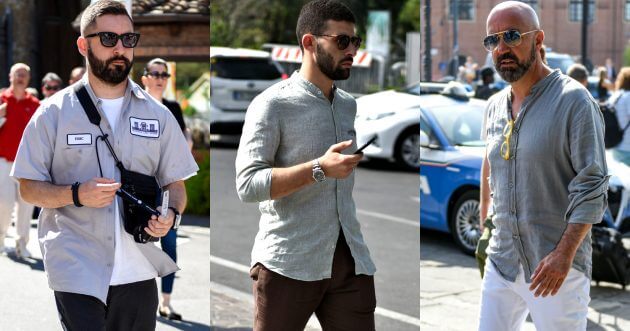
Camouflage patterns use naturally occurring mottled, spotted, or striped patterns to confuse and mislead people’s sense of color. When used in an unexpected environment, unnatural colors rise to the surface and stand out, a characteristic that can be reversed and used in town style to add a rugged accent. In this issue, we focus on “camouflage pants” and introduce the key points of wearing them, the latest international men’s coordinates as a reference, and recommended items!
Suponsered by
First, let’s take a look at the five main camouflage patterns!
Camouflage pattern 1: Woodland
Woodland is a 60% enlargement of the camouflage pattern developed at the U.S. Army Engineer Research and Development Laboratory in 1948, and was designed with long-range engagement in mind. Also known as U.S. Woodland, M81 Woodland, or 4 Color Woodland, this high-contrast four-color camouflage pattern was used by the U.S. Army from 1981 to 2006. It was used as one of the standard camouflage patterns of the U.S. military from 1981 to 2006 for battle dress uniforms (BDU), etc., and is the most widely recognized camouflage pattern in the general public.
Camouflage pattern 2: Tigerstripe
Tiger camo, officially called tigerstripe, is a variation of brushstroke camouflage developed by the South Vietnamese military in the 1960s, and is said to have originated in the lizard camouflage of the French military, which was the suzerain power in Vietnam. The camouflage pattern, consisting of black, brown, and green stripes, was considered effective in the rainforests of Southeast Asia, where bamboo is abundant, and during the Vietnam War, the U.S. Army used the same pattern for its Green Berets, SEALs, and other special forces.
Search for Tiger Camo Pattern Pants
Camouflage Pattern 3: Desert Camo/Chocolate Chip
Desert Camo is a six-color desert camouflage pattern developed by the U.S. Army in 1981. It is characterized by a combination of brown cloud shapes on a light beige base called “tan,” and is nicknamed “Chocolate Chip” because the black spots designed to imitate rocks look like chocolate chips. It has been adopted by the military in Korea, Iraq, and all over Africa.
Search for Desert Camo pattern pants
Camouflage pattern 4: Digital camo
Digital camo is a pixel pattern camouflage pattern designed to function in desert, forest, and urban environments. (Desert Camouflage Uniform)), which is used for combat in desert areas. The ACU is a new type of camouflage pattern used in the Army Combat Uniform. The world’s first digital camouflage pattern was CADPAT, developed by the Canadian Armed Forces in 1996, and the U.S. Marine Corps’ first digital camouflage was MARPAT, implemented in 2001.
Find pants with digital camouflage pattern
Camouflage pattern #5: Real tree camo
Tree camo is a camouflage pattern developed by the U.S. company RealTree for hunting wear. It is characterized by a more realistic and picturesque beauty that is different from graphical military camouflage patterns. There are various types of camouflage patterns, ranging from those that look like direct transfers of forest images to patterns with motifs of fallen and dead leaves, and they are widely used not only for outdoor wear but also for street wear.
Find pants with tree camo pattern
2/3GO TO NEXT PAGE
